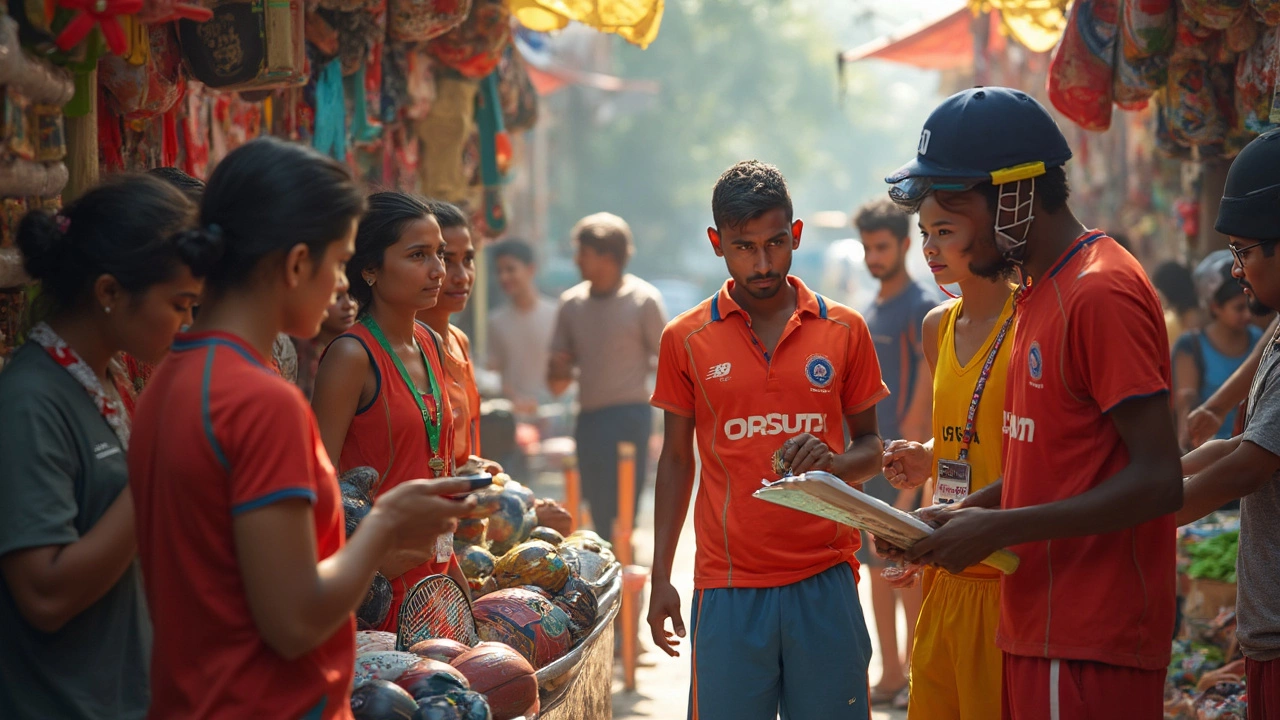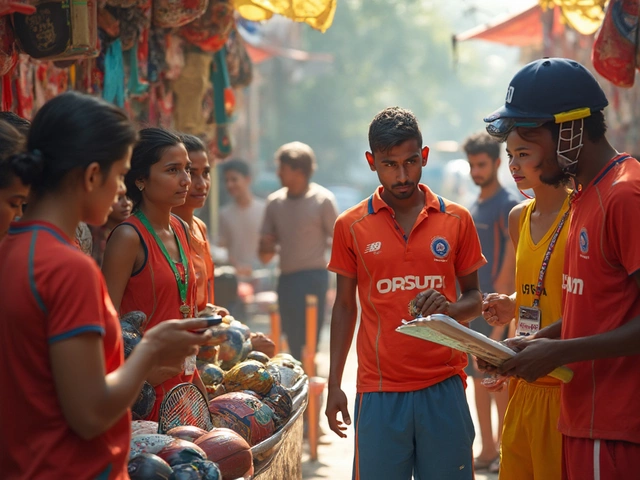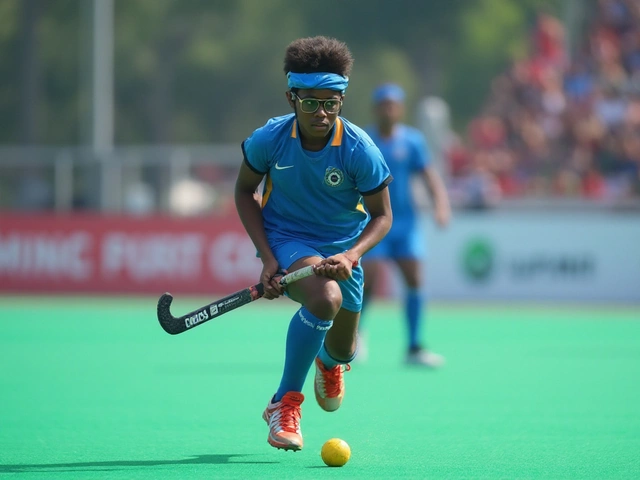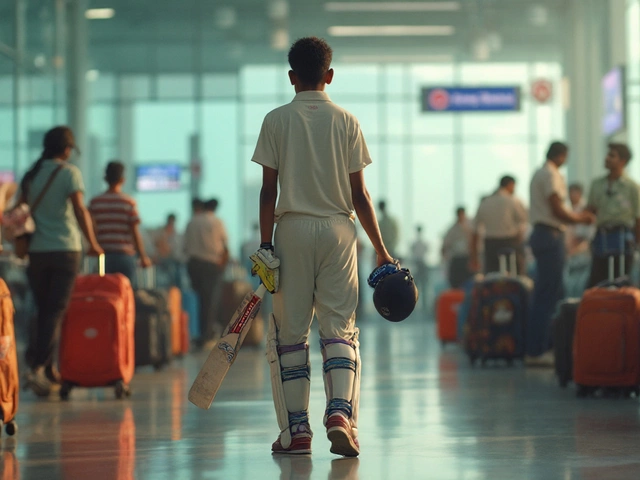Ever wondered what exactly counts as "playing equipment" in sports? It's more than just the ball or bat everyone talks about. Playing equipment is pretty much everything you actually need to take part in a game, from the glove that saves your hand in baseball to the crisp net that makes a tennis game official.
It's not just about having any ball or stick; the type and quality of your equipment can totally change your experience. The wrong shoes, for example, can turn a fun soccer match into a nightmare of blisters and slips. Even using an old, water-logged football changes how the game feels and plays.
You don’t need to spend a fortune to get started with most sports. But it's smart to know which pieces are must-haves, and which are just nice extras you can skip at first. A lot of beginners try to get every cool gadget out there, but sometimes less is more. Focus on getting sturdy, well-fitting gear before you splurge on fancy upgrades.
- What Counts as Playing Equipment?
- Balls, Bats, and Rackets: Sports Gear 101
- Special Equipment for Different Sports
- Tips for Choosing the Right Gear
- Keeping Equipment in Good Shape
- Game-Changing Add-Ons You Might Overlook
What Counts as Playing Equipment?
People throw around words like gear, kit, or stuff, but when someone says playing equipment in sports, they mean the actual items that are needed to take part in a game. This is not just what looks cool or matches your jersey; it’s what the rules say you need to play safely and properly.
Let’s get specific. Playing equipment can be:
- Balls (like footballs, basketballs, cricket balls)
- Bats, rackets, paddles, clubs (used in cricket, tennis, table tennis, golf)
- Protective gear (think helmets, mouthguards, shin pads, gloves, pads)
- Special shoes or boots (like cleats for soccer or spikes for running)
- Goalposts, nets, or hoops (anything the ball or player has to interact with)
If you check out rulebooks for most sports, they list out mandatory equipment. For example, in soccer, FIFA says you need a jersey, shorts, socks, shin guards, and boots—no exceptions.
Let’s look at a quick comparison of what’s considered core equipment in different popular sports:
| Sport | Basic Playing Equipment |
|---|---|
| Soccer | Ball, cleats, shin guards, goalposts |
| Basketball | Ball, hoop, basketball shoes |
| Cricket | Ball, bat, pads, gloves, helmet, stumps |
| Table Tennis | Paddle (bat), ball, net, table |
| Tennis | Racket, ball, net, proper shoes |
The big thing that separates "playing equipment" from other types of gear is that, without these items, you just can't play or the game isn’t official. Stuff like water bottles, towels, or even team uniforms (other than what’s required for safety or rules) might be nice to have but aren’t considered necessary equipment by most sports leagues.
If you’re looking to join a team or show up at a local game, it helps to double-check what's needed for your sport. Sometimes, the requirements are stricter in tournaments than for weekend games with friends, so don’t skip this step.
Balls, Bats, and Rackets: Sports Gear 101
Let’s get down to what most people picture when they think about sports equipment: the stuff you actually need to play. For a bunch of popular sports, this comes down to three basics—balls, bats (or sticks), and rackets.
Balls are at the center of games like soccer, basketball, football, volleyball, cricket, and baseball. The size, weight, and material aren’t random. Soccer balls, for example, are usually made of 32 panels of synthetic leather and have to weigh between 410 and 450 grams to meet FIFA standards. In basketball, the official NBA ball is made of leather and weighs about 624 grams. Even a small difference can mess with how you pass, shoot, or throw.
Bats and sticks come into play in sports like baseball, cricket, hockey, and lacrosse. Baseball bats are usually made of wood or aluminum with strict length and diameter rules—even the tiniest crack or uneven weight can throw off your swing. In cricket, the bat is usually made from willow wood for its balance and shock absorption. Hockey sticks need a good mix of stiffness and flexibility, depending on whether you’re playing field or ice hockey.
Rackets are essential in tennis, badminton, squash, and table tennis. The frame material, string tension, and grip size totally change how you play. Tennis rackets come in different weights and head sizes, which affect power and control. A pro might go for higher string tension to get more control, while a beginner usually needs a lighter racket with a bigger sweet spot. Badminton rackets are even lighter, and most players use synthetic strings for durability.
If you’re just getting started, skip the super expensive pro gear. Go for equipment that fits your hand comfortably and matches your skill level. Test out a few different brands if you can—sometimes the “best” bat or racket really just depends on how it feels in your hands. And make sure to check the rules for your league or tournament, since some have strict limits on what’s allowed.
Special Equipment for Different Sports
Every sport has its own gear, and sometimes the differences are bigger than you’d think. Sure, you can’t play basketball without a hoop or soccer without a ball, but some games call for special playing equipment that isn’t as obvious—or as easy to find at your local store.
Take cricket, for example. There’s the bat and ball, but you also need wickets, protective pads, and even a helmet. The rules demand these, not just for play but for safety. In ice hockey, the list gets long: helmet, mouthguard, gloves, pads, and a stick. Even the puck itself is special—made of vulcanized rubber and built to fly fast across the ice.
Moving over to baseball, catchers need extra stuff like chest protectors, shin guards, and special mitts. Football (soccer) is usually more minimal, but at higher levels, players wear shin guards, quality cleats, and sometimes even GPS tracker vests to check performance. Table tennis? You’ll want paddles that suit your style, plus different ball types for training versus matches.
- Cricket: Bat, ball, pads, helmet, gloves, wickets
- Ice hockey: Stick, puck, helmet, pads, skates, mouthguard
- Baseball: Bat, ball, glove, mitts, helmet, pads (for catchers)
- Football (Soccer): Ball, cleats, shin guards, sometimes GPS vests
- Table Tennis: Paddle, balls (training and match), net
One more cool example: in lacrosse, the stick itself is totally unique. Men’s and women’s sticks are different, and the goalie’s stick is even bigger. These details matter more than you’d guess. Using the wrong gear can get you penalized or even keep you off the field.
No matter what sport you jump into, check the rulebook and talk to experienced players before you buy. Sometimes leagues have special rules or equipment standards. It can be the difference between scoring big and not even getting in the game. If you’re starting out, you really just need the basics. But as you improve, upgrading your playing equipment can help you step up your game.
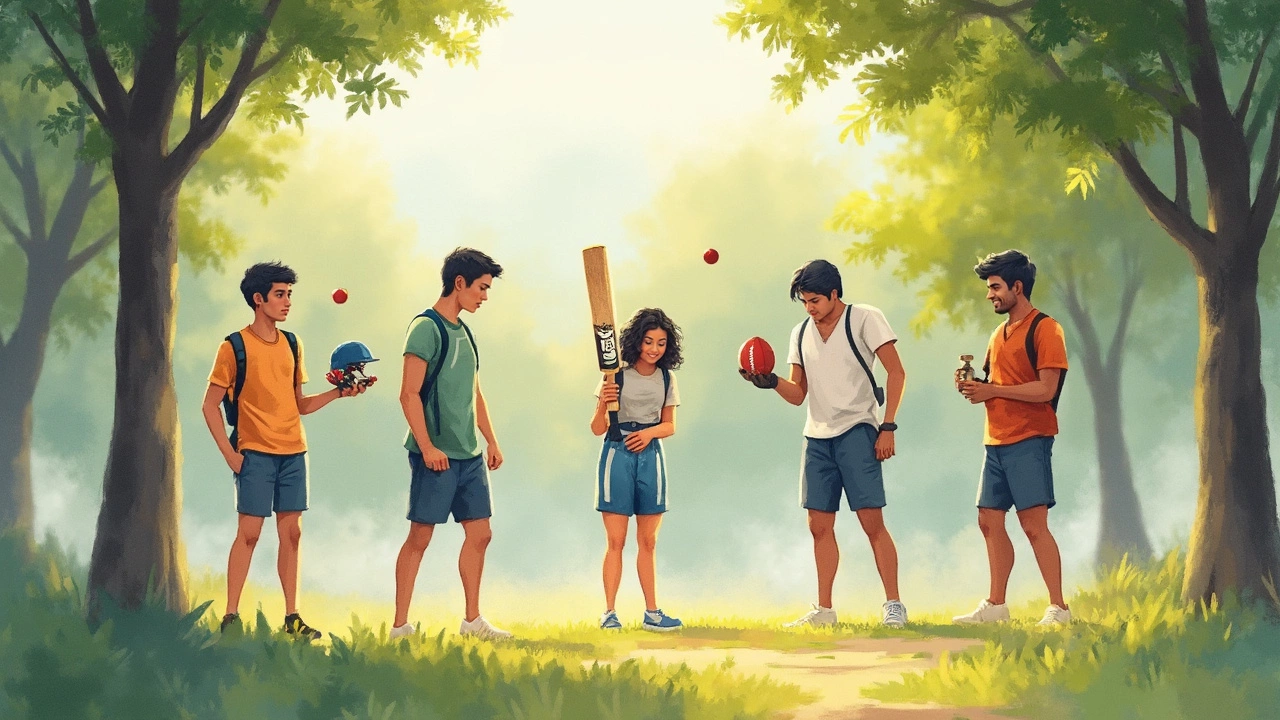
Tips for Choosing the Right Gear
Picking the best sports gear can be confusing, especially with so many options in stores and online. It’s not just about grabbing what looks cool. The right playing equipment can help you stay safe, play better, and actually enjoy yourself longer.
Start by checking official size and weight standards for your sport. For example, a basketball for adults should be a size 7 (29.5 inches), while kids use smaller sizes. In cricket, bats should match your height and strength—not just your favorite player’s model. Even sports like table tennis have gear rules. Pro paddles use specific rubber for good reason—it controls bounce and speed.
Comfort comes next. Try on shoes and clothing with the socks or pads you’ll use during a game. If you’re shopping online, measure your hand, foot, or waist first, and use the brand’s size chart. Ill-fitting shoes lead to ankle sprains, sore arches, and more trips to the bench than you want.
Material matters, too. Synthetic gear dries faster and lasts longer in wet sports like soccer or field hockey. Leather works well in baseball gloves, but it needs more care—oil it and store it out of the sun. Cheap plastic breaks fast, especially in heat or cold, so always check product reviews.
Look for certifications—like “FIFA Quality Pro” or “NOCSAE approved” (for helmets)—when you buy balls and protective gear. This means the equipment meets higher safety and performance standards. Knock-off gear can be tempting because it costs less, but broken helmets and dodgy bats aren’t worth the risk.
- Always test or try gear before buying if you can—bounce a ball, swing a bat, walk around in new shoes.
- For beginners, start simple. Get the basics sorted and upgrade later as you improve.
- Don’t ignore maintenance instructions. Well-kept gear usually means fewer injuries and better results.
- Ask coaches or teammates for honest feedback—they know what works for your level.
Just remember, the most expensive gear isn’t always the best. Choose what feels right, fits your needs, and helps you play with confidence.
Keeping Equipment in Good Shape
No one wants to show up ready for the game and realize their gear is falling apart. Taking care of your sports equipment doesn’t have to be a hassle, and it’ll help it last way longer.
Most people forget the simple stuff: wipe down your gear after use. Sweat, dirt, and even grass stains can mess up things like bats, pads, and balls. Leaving a muddy soccer ball in your trunk? That’s the fastest way to turn it rock-hard and useless.
For things like rackets and bats, check for cracks or loose grips every now and then. Fix small problems early and you’ll avoid big repairs later. When it comes to shoes, knock out the dirt and let them air out instead of tossing them in a dark bag where they’ll start to smell and break down faster.
If your sport uses anything with strings or nets (think tennis or badminton rackets), keep them away from heat and direct sunlight. Too much sun can make them brittle. The same goes for leather gloves—rub them with a little oil from time to time to keep them flexible, and never leave them soaking wet.
- Store everything in a cool, dry place. Humidity ruins both leather and synthetic stuff.
- Inflate balls to the right pressure before each game. Under-inflated balls are tough to control and can tear.
- Label your gear to avoid mix-ups or losing things at practice.
One more thing: always check the recommended cleaning instructions. Throwing everything in the washing machine can ruin helmets, pads, or shoes fast. Quick hand washing and air drying is usually safest. Getting into these habits will save money and stress in the long run, and you’ll get a lot more out of your equipment.
Game-Changing Add-Ons You Might Overlook
It’s easy to focus on just the basics, but some add-ons really do change how you play. If you’re only looking at the main gear, you might be missing stuff that can give you a serious edge or just make things way more comfortable.
Take sweatbands and grip tape, for example. Tennis and badminton players swear by grip tape to keep their rackets from slipping. Basketball players use sweatbands so sweat doesn’t drip onto their hands and make the ball slippery. Both items are cheap but make a legit difference.
Sports mouthguards are another biggie. You’ll see them in everything from hockey to soccer. They might seem like a hassle, but a mouthguard can save your teeth from a painful mishap. Same deal with shin guards—lots of kids skip them in soccer practice, but after the first shin bruise, no one forgets again.
Here’s a list of some overlooked add-ons that can be game-changers:
- Sports equipment bags: Keeps all your stuff organized and easy to carry—especially helpful if you’ve got a bunch of small items like balls, pads, or water bottles.
- Specialized socks: Running or soccer socks keep your feet dry and help prevent blisters. That blister pad you forgot last time? Wish you had it when you play a second match.
- Compression sleeves: Used in basketball and running. They help blood flow and can keep muscles from getting tired as fast.
- Protective lenses or goggles: Especially if you play racquetball or do outdoor sports. Your eyes are worth the extra layer of protection.
- Reusable water bottles: Obvious, but staying hydrated is often overlooked. Keep a good one in your bag instead of buying drinks every time.
None of these will magically turn you into a pro, but they can make a game safer, smoother, and honestly a lot more enjoyable. Don’t underestimate the power of small upgrades—sometimes it’s these tiny things that keep you playing longer, injury-free, and more confident.
